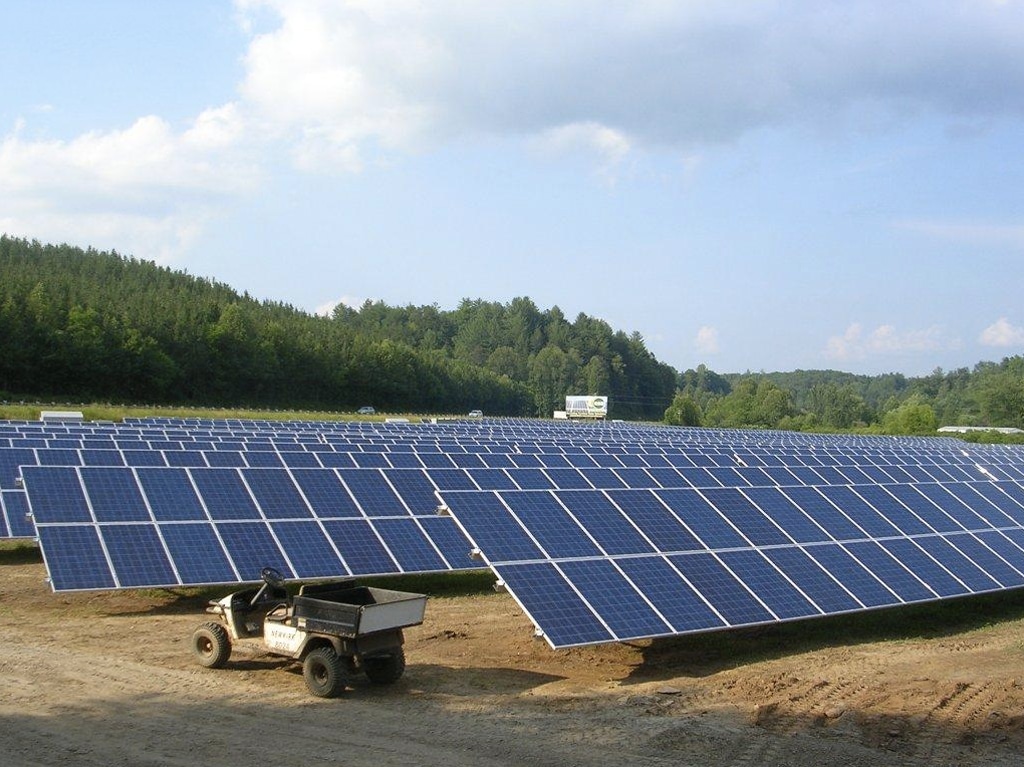The North Carolina Energy Policy Council (NCEPC) has asked the state’s legislature to re-evaluate energy policy throughout the state, focusing on the effects of solar generation.
NCEPC, an independent body staffed by the North Carolina Department of Environmental Quality, voted unanimously to move forward with the request, which comes as North Carolina climbs to No. 2 in installed solar in the country.
As a result of the rapid growth, Duke Energy says it has experienced some difficulties accommodating the flood of new projects entering the pipeline, said Randy Wheeless, a spokesman for the utility. The question centers on the guidelines set under the Public Utility Regulatory Policies Act (PURPA).
PURPA encourages states to reduce dependence on fossil fuels by requiring that utilities build or purchase renewable-energy generation and efficient cogeneration if the option is equal or cheaper than the cost of building a new fossil-fuel plant.
The Energy Information Administration has reported that PURPA has driven 16 GW of new power capacity from qualified renewable and cogeneration projects nationwide.
According to GTM Research, one of the leading research companies in the solar industry, there are 191 projects in North Carolina’s solar pipeline totaling 1.8 GW of utility PV development.
Some of those projects are standard qualifying-facilities projects under PURPA, while a few are larger and bilaterally negotiated using PURPA as a price ceiling and starting point for contract negotiations.
In North Carolina, the maximum size for a project eligible for PURPA support is 5 MW, Wheeless said. The resulting backlog is preventing Duke from effectively adding solar to its grid.
“We want solar on our grid system, but we want to bring it on in an orderly fashion,” Wheeless said. “Right now, there are too many projects in the queue that won’t ever get built. We believe that slight modifications to North Carolina law would help alleviate the backlog and help developers get shovel-ready projects on the grid more quickly.”
Some of the issues the NCEPC is asking the legislature to commission a comprehensive power grid reliability study — funded by Duke Energy and Dominion Power — that would include:
- an assessment of third-party solar integration,
- a reevaluation of the 80-percent property tax exemption for “all new solar electric projects,”
- a re-evaluation of the state’s Renewable Energy and Energy Efficiency Portfolio Standard (REPS);
- and a study to assess “the need for a solar energy facility permitting program to address, among other items, construction and end of life issues.”
Not everyone is quite so sanguine about Duke Energy’s claims. Scott Thomasson, Vote Solar’s director of new markets, feels utilities across the country, including Duke in North Carolina, may be trying to change PURPA’s rules to stall solar’s future development.
“PURPA has cleared the way for gigawatts of cost-competitive solar in North Carolina,” Thomasson said. “I’d hope to see North Carolina’s leaders recognize the tremendous economic and security benefits of these competitive projects and keep the way clear for solar investment.”
Despite some skepticism, Duke’s Wheeless says the utility is anxious to add more solar to its portfolio — and that as solar continues to expand in the state, it only makes sense that adjustments will need to be made.
“We’ve had incredibly rapid solar growth in North Carolina, and it’s been great for the state,” Wheeless said. “But because of the expansion’s speed, we’re going through some growing pains. I’m confident we’ll get through them pretty easily, and the whole solar industry will be better for it in the end.”
This content is protected by copyright and may not be reused. If you want to cooperate with us and would like to reuse some of our content, please contact: editors@pv-magazine.com.








By submitting this form you agree to pv magazine using your data for the purposes of publishing your comment.
Your personal data will only be disclosed or otherwise transmitted to third parties for the purposes of spam filtering or if this is necessary for technical maintenance of the website. Any other transfer to third parties will not take place unless this is justified on the basis of applicable data protection regulations or if pv magazine is legally obliged to do so.
You may revoke this consent at any time with effect for the future, in which case your personal data will be deleted immediately. Otherwise, your data will be deleted if pv magazine has processed your request or the purpose of data storage is fulfilled.
Further information on data privacy can be found in our Data Protection Policy.